On April 2-3, CFLC hosted the International Forum on Translation and Interpreting Education and Assessment (IFTIEA) at Xiamen Hotel. At 8 AM on April 3, as part of the IFTIEA, the Expert Forum on Sign Language Education and Assessment was held in the Amethyst Hall of Xiamen Hotel. For the first time in China, the forum brought together renowned international sign language interpreting scholars and leaders of major sign language interpreting associations, including the current and former presidents of the World Association of Sign Language Interpreters (WASLI), the head of the Registry of Interpreters for the Deaf (RID), and the director of the Teaching Interpreting Educators and Mentors (TIEM) Center. Also in attendance were senior professors from world-renowned sign language interpreting research and education institutions, such as Gallaudet University in the U.S. and the University of Alberta in Canada. The Chinese attendees included experts from the Ministry of Education’s Steering Committee for the Training of Special Education Teachers in Higher Education Institutions, the director of the National Center for Sign Language and Braille Research, and sign language researchers from the Chinese Association of the Deaf.
The forum was chaired by CFLC Professor Xiao Xiaoyan. Prof. Xiao firstly extended a warm welcome to the guests who attended the online and offline events. In particular, she expressed her gratitude to the international experts and academics who attended the forum online despite the time difference. After that, Prof. Xiao delivered a keynote speech titled “Sign Language Interpreting – In Search of a Chinese Solution”. She pointed out that the current situation of sign language interpreting is unsatisfactory. The main problems, according to her, are: low level of satisfaction among the deaf people; unpopularity of TV sign language interpreting among deaf viewers; many challenges (knowledge, language, skills, etc.) faced by interpreters; a mismatch between the occasions when deaf people need interpreters and the occasions when interpreters work. In this regard, Prof. Xiao introduced Xiamen University’s exploratory efforts in the field of sign language interpreting and proposed a future path for the professionalization of sign language interpreting. She stated that it was important to improve the talent training system, improve teaching methods and enhance the relevance of teaching materials, while building a sign language interpretation service system in the market.
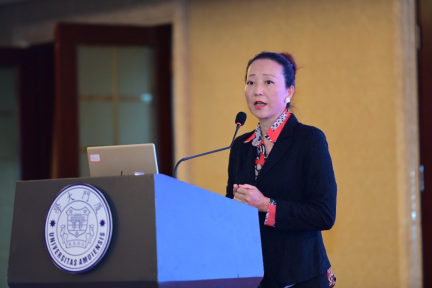
Prof. Xiao Xiaoyan chairs the forum
Professor Christopher Stone, the president of the World Association of Sign Language Interpreters (WASLI), introduced, by video link, the history and status quo of the assessment of British sign language interpreters. He pointed out that as early as a century ago, informal sign language interpreting already emerged in the UK. He also used the 18th-century courtroom sign language interpreting as an example to illustrate that for a long time after that, sign language interpreting and sign language interpreter assessment were mostly related to deaf welfare work. Welfare work for the deaf was basically handled by social workers. Its public welfare nature compelled the government to intervene. Prof. Stone concluded by suggesting that sign language interpreting certification should take into account interpreters’ knowledge and skills and be combined with various assessment methods, such as traditional practices, curricula, CVs and multi-party assessment.
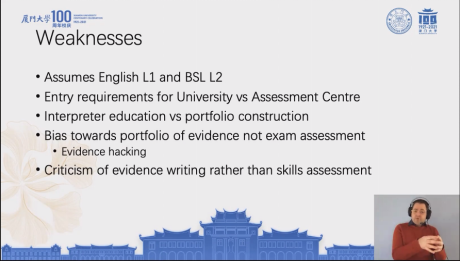
Prof. Christopher Stone addresses the forum by video link
Professor Gu Dingqian from Beijing Normal University, who is also the director of the Ministry of Education’s Steering Committee for the Training of Special Education Teachers in Higher Education Institutions, also gave a talk. He reviewed the work of the National Committee on Language and Writing, including the launch of the Chinese Finger Alphabet Program, the collection and collation of common vocabulary for sign language, and the formulation of the General Scheme for the PRC National Anthem in Sign Language, which has recently generated a lot of buzz online. Gu pointed out that going forward, it is important to improve the compilation of reference books, promote the digitalization, systematization and standardization of sign language research, advance the national common sign language, and enhance sign language examination and certification.
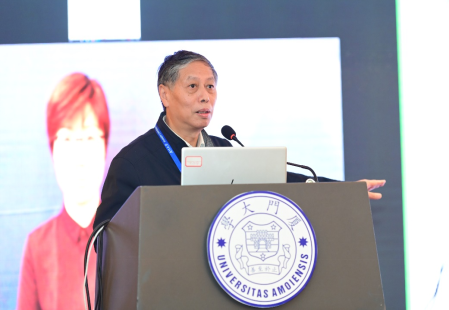
Prof. Gu Dingqian speaks at the forum
Debra Russell, former president of WASLI and a member of the Committee on Sign Language Interpreting Education, asked several questions raised by members of the audience: What is sign language interpreting ability? How is it assessed? And is our model for assessing sign language interpreters valid from the time of enrollment to market entry? Currently around the world, the assessment of sign language interpreters consists of two main components: the written test, which deals with theoretical knowledge, and the interpreting performance, which examines the interpreter’s ability to cope with long and short passages, multiple interactive scenarios, and a variety of interpreting skills. Prof. Russell believes that the language test should be separate from the interpreting test. Existing practices (experiences of international organizations, specific assessment tools such as consensus models, feedback models, etc.) can provide points of reference, and different assessment subjects have different criteria and should cooperate more with one another. Jonathan Webb, President of RID, introduced the American Sign Language Interpreter Certification System from his own experience as a sign language interpreter. The system focuses on both the professional ethics and professional skills of interpreters, and promotes the continuous improvement of interpreters through three certification modules, including professional ethics, the testing system and professional development, as well as the certification maintenance mechanism. His concluding remarks were thought-provoking: obtaining certification is not the end, but the beginning, and certification is a lifelong journey.
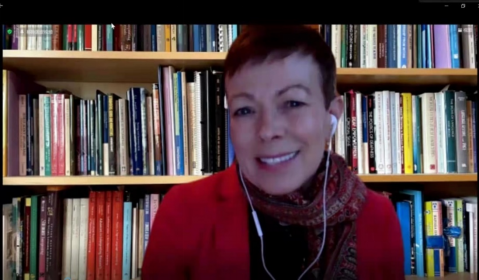
Prof. Debra Russell speaks by video link
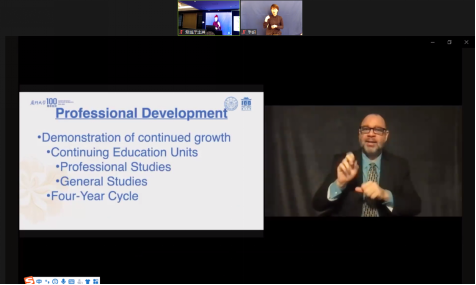
Prof. Jonathan Webb gives an online presentation
Yang Guowei, Deputy Director of the Sign Language Research and Promotion Committee of the China Association of the Deaf, introduced the development of the Chinese Sign Language Interpreter Professional Qualification Standards. At present, sign language interpreter certification suffers from the lack of interpreting and testing theory, as well as deficiencies in design and scoring. The new qualification standards are intended to solve these problems and provide a more scientific entry and assessment system for the industry.
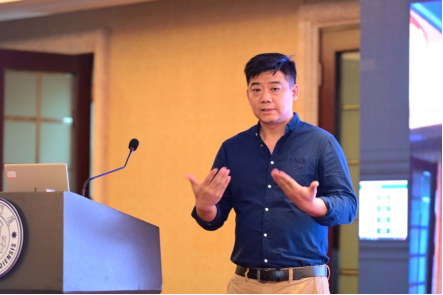
Deputy Director Yang Guowei shares his insights
Professor Cynthia B. Roy, Ph.D. in Sociolinguistics from Georgetown University and professor emeritus of sign language interpretation at Gallaudet University, and Betsy Winston, Ph.D. in Applied Linguistics from Georgetown University and director of TIEM, made presentations online. Prof. Roy introduced the concept of “sign language interpreter fluency” and pointed out that most of the current sign language training programs and institutions are “not worthy of the name”, mainly because of the lack of clear, explicit and uniform admission and assessment criteria. In her presentation, Director Winston emphasized that the practice and assessment of sign language interpreters should pay attention to “meaning” itself. She criticized past assessments for focusing on information and skills and lacking validity. One should focus on the real key aspects of interpreting, especially the subtle communicative cues, because constructing and understanding meaning is a very complex process, and the transmission of meaning is never a static data transfer. Finally, she suggested that the scale design should focus on meaning reconstruction and skill and literacy systems, and refine inter-grade increments to facilitate students’ self-review.
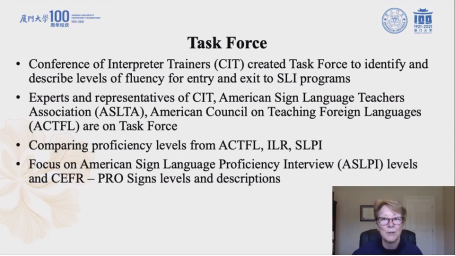
Prof. Cynthia B. Roy gives an online presentation
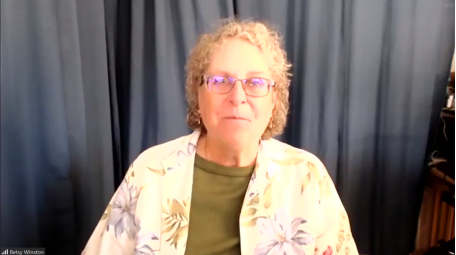
Director Betsy Winston shares her insights
CFLC Professor Han Chao presented paired comparison-based assessment of sign language interpreting. This method uses a pairwise scoring approach combined with an online pairwise comparison assessment platform for scoring. The research results show that this scoring method can produce more stable scoring results.
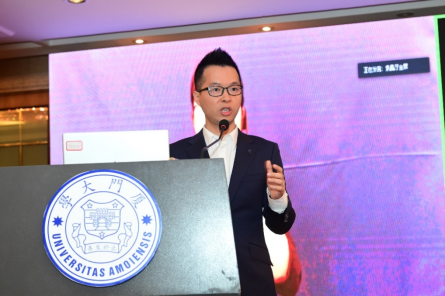
CFLC Professor Han Chao presents his new method
Following the presentations, a Q&A session was held. The participants had a lively discussion and exchange on the provision of sign language interpreting services during the pandemic and the empirical data support for sign language interpreting certification.

Audience
The in-depth discussions on various aspects of interpreter education and assessment are expected to contribute to the wellbeing of the deaf community and safeguard their language rights. The success of the forum helps Chinese sign language interpreter education move towards professionalism, standardization of sign language interpreter certification, and universalization of sign language practices, ultimately improving the quality of sign language interpreting and promoting the protection of the rights of related groups.